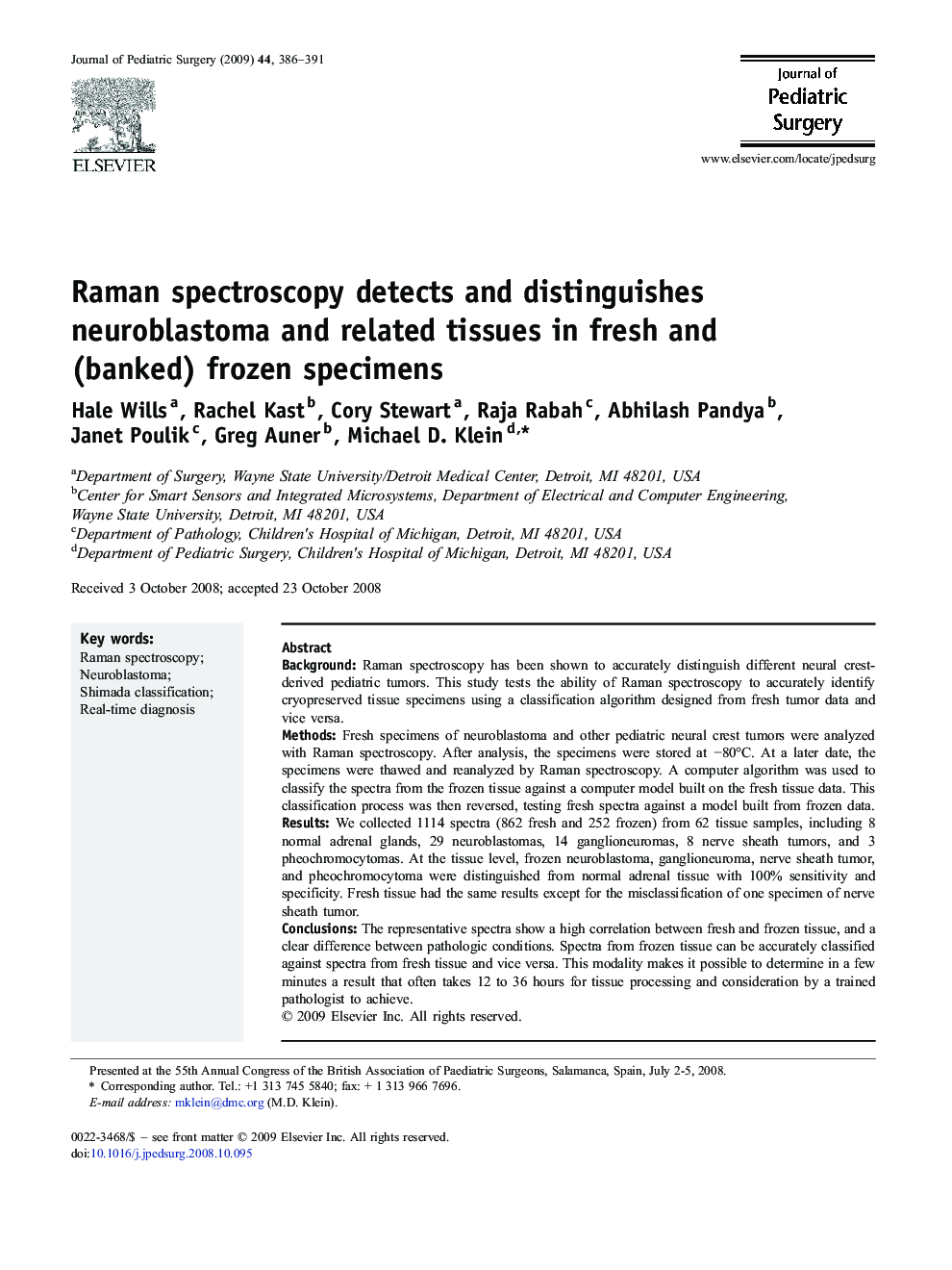| Article ID | Journal | Published Year | Pages | File Type |
|---|---|---|---|---|
| 4158631 | Journal of Pediatric Surgery | 2009 | 6 Pages |
BackgroundRaman spectroscopy has been shown to accurately distinguish different neural crest-derived pediatric tumors. This study tests the ability of Raman spectroscopy to accurately identify cryopreserved tissue specimens using a classification algorithm designed from fresh tumor data and vice versa.MethodsFresh specimens of neuroblastoma and other pediatric neural crest tumors were analyzed with Raman spectroscopy. After analysis, the specimens were stored at −80°C. At a later date, the specimens were thawed and reanalyzed by Raman spectroscopy. A computer algorithm was used to classify the spectra from the frozen tissue against a computer model built on the fresh tissue data. This classification process was then reversed, testing fresh spectra against a model built from frozen data.ResultsWe collected 1114 spectra (862 fresh and 252 frozen) from 62 tissue samples, including 8 normal adrenal glands, 29 neuroblastomas, 14 ganglioneuromas, 8 nerve sheath tumors, and 3 pheochromocytomas. At the tissue level, frozen neuroblastoma, ganglioneuroma, nerve sheath tumor, and pheochromocytoma were distinguished from normal adrenal tissue with 100% sensitivity and specificity. Fresh tissue had the same results except for the misclassification of one specimen of nerve sheath tumor.ConclusionsThe representative spectra show a high correlation between fresh and frozen tissue, and a clear difference between pathologic conditions. Spectra from frozen tissue can be accurately classified against spectra from fresh tissue and vice versa. This modality makes it possible to determine in a few minutes a result that often takes 12 to 36 hours for tissue processing and consideration by a trained pathologist to achieve.
